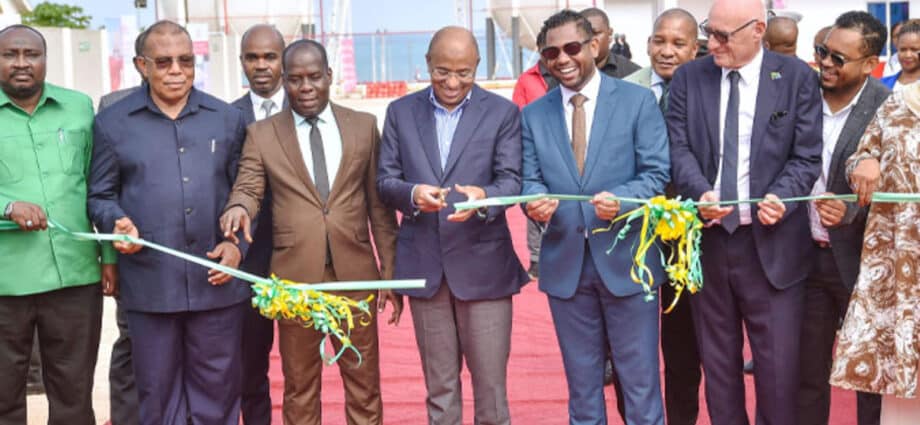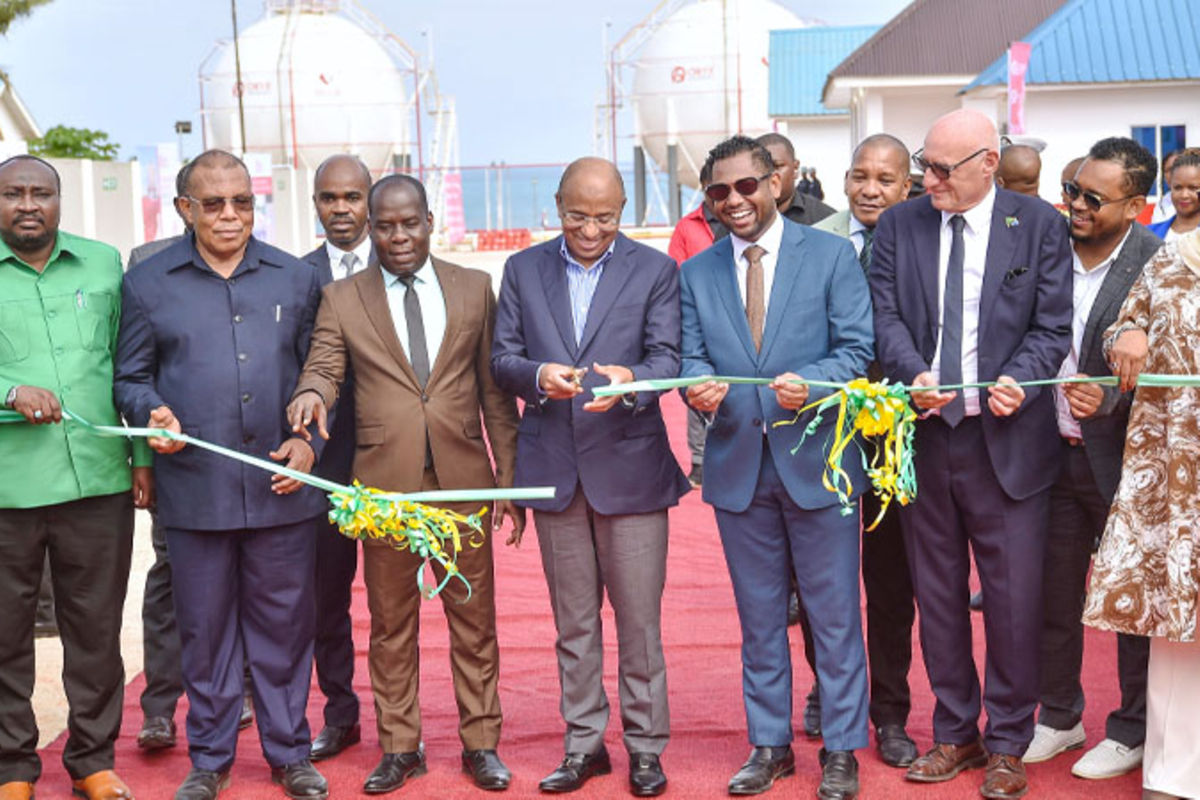Unguja. Zanzibar now has a large gas storage facility, in a landmark development that assures the availability of enough Liquefied Petroleum Gas (LPG) in the Isles.
The facility, built by Oryx Gas Zanzibar and its partner TP Limited, means that Zanzibar can now receive large vessels and offload enough LPG supplies to the Isles.
The latter (TP Limited) is a subsidiary of Vigor Turky’s Group of Companies (Vigor Group).
President Hussein Mwinyi graced the launch of the facility at the Mangapwani port here yesterday, where he said the move was also in line with Tanzania’s wider goal of raising the percentage of households using clean cooking energy from the current 10 percent to 80 percent by the year 2024.
Speaking during the event, Dr Mwinyi urged gas companies to put in place strategies that would result in the reduction of LPG so that members of the public could afford them.
He said that for a long time, Zanzibar has relied on the Malindi port, but due to increased economic activity, it has become inadequate. Consequently, the government designated Mangapwani for energy purposes, including gas, oil and other infrastructure.
“So now, we will receive large vessels and store them in two large tanks that are capable of holding 130 tonnes each, built by Oryx,” he said.
“The establishment of a gas storage warehouse in Zanzibar will promote the use of clean energy, aligning with President Samia Suluhu Hassan’s goal that by 2034, 80 percent of Tanzanian households should move to the use of clean cooking energy,” he added.
The managing director of Oryx Gas Tanzania Limited, Mr Benoît Araman, said the opening of the Mangapwani gas warehouse demonstrates Oryx Energies’ commitment to investing in critical infrastructure supporting the safe and extensive use of LPG in Tanzania. This initiative also meets the government’s request for ensuring sustainable LPG distribution nationwide.
“The Tanzanian gas market has witnessed a nearly 13-fold increase in imports over the past decade, from 20,000 tonnes in 2010 to 293,000 tonnes in 2023,” he added.
He said the partnership with Vigor Group’s subsidiary to strategically build and enhance LPG gas distribution on the island underscored Oryx Energies’ dedication to fostering collaboration with local companies.
“The Mangapwani warehouse, operational since early May, can store up to 1,300 tonnes of LPG gas and received its first shipment of 1,200 tonnes on May 2, 2024,” he stated. The General Manager of Oryx Gas Zanzibar Limited, Mr Shuwekha Omar Khamis, said the company will continue playing its crucial role in laying the foundation for expanding LPG distribution in Zanzibar.
Earlier, the Vigor Group Chairman, Taufiq Salim Turky, said his company decided to partner with Oryx due to their extensive experience in the Tanzanian gas market, expressing confidence that gas will become more accessible to many.
He also announced plans to reduce gas prices in Zanzibar by 20 percent starting July 1 this year, with further reductions planned thereafter.
The director general for the Zanzibar Utilities Regulatory Authority (Zura), Mr Omar Ali Yussuf, said for years, the energy sector, particularly gas, relied on the Malindi port, where it was being unloaded via boats.
“Before this gas and oil unloading port, we used small boats and other unsafe means. But now, we have a dedicated port for gas and oil vessels,” he said.
He also emphasised that through government plans and effective blue economy policies, Mangapwani Port aims to become a major hub for transporting gas and oil across East Africa, noting that energy prices in Zanzibar are lower compared to other countries.















